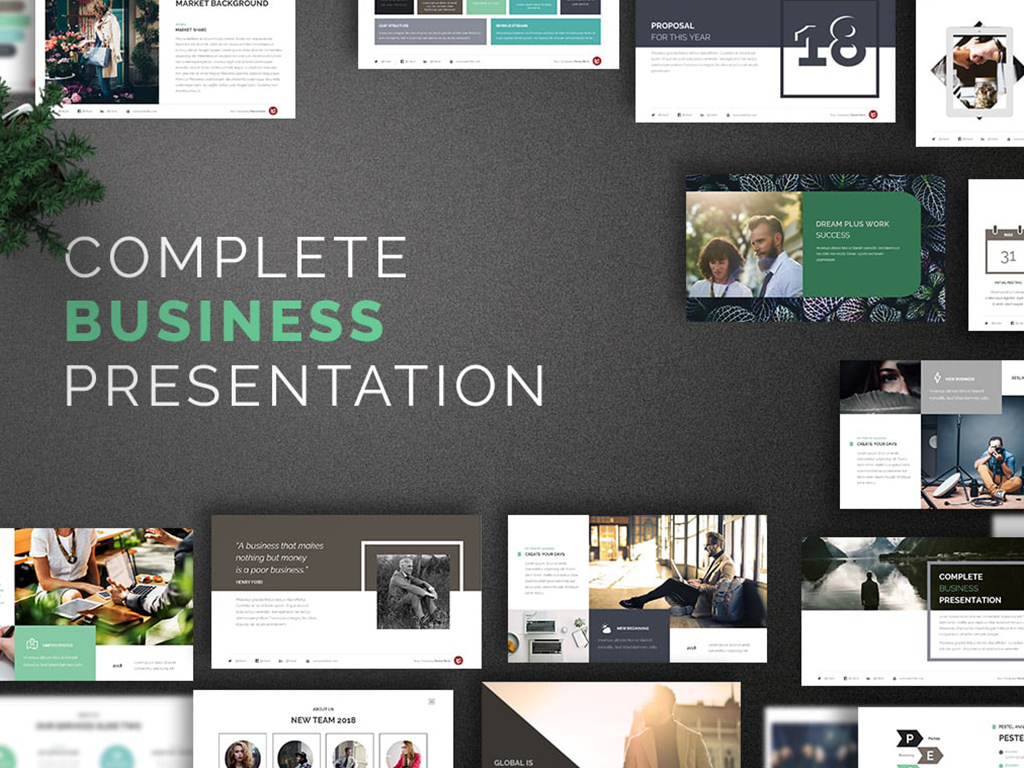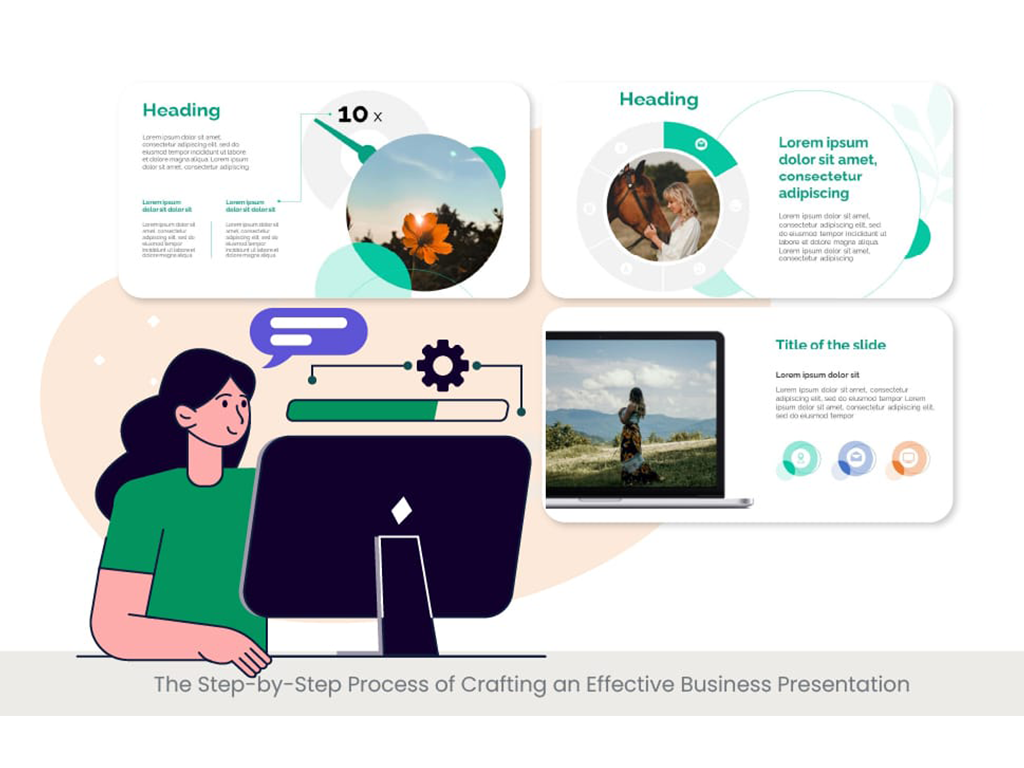Getting Started
In today’s fast-paced world, capturing and holding attention can be a challenge. Whether you are pitching a new idea to investors, delivering a training session to employees, or presenting research findings at a conference, your slide deck plays a crucial role in getting your message across effectively. A professional slide deck doesn’t just convey information, it captivates your audience, keeps them engaged, and leaves a lasting impression.
However, creating a compelling slide deck can be daunting. Fear not! This guide will equip you with the knowledge and tools to design professional slide decks that resonate with your audience and elevate your presentations.
Understanding Your Audience
Before you even start building your slides, take a step back and consider your audience. Who are you presenting to? What is their level of knowledge on the topic? Understanding your audience helps you tailor your content to their needs and ensure your message resonates.
For example, if you are presenting complex financial data to a group of seasoned investors, your slides can be more data-driven. Conversely, if you are pitching a marketing strategy to a client who does not have a marketing background, your slides should focus on explaining the “why” behind your recommendations in simpler terms.
Here are some questions to ask yourself:
- What is the age range and professional background of your audience?
- What is their existing knowledge of the topic you are presenting?
- What are their goals and expectations for the presentation?
By addressing these questions, you can ensure your slide deck speaks directly to your audience, increasing its effectiveness.
Define Your Objectives
Every slide deck should have a clear purpose. Defining your objectives helps shape your content and design. Start with a clear outline of your key messages and how each slide will support these goals. A structured approach prevents information overload and maintains focus.
Crafting Your Content

1. Start with a Strong Opening
The first few slides are crucial in grabbing attention. Start with a compelling title slide that includes your presentation title, your name, and your position. Follow this with an engaging opening slide that outlines what the audience can expect. This helps set the stage for a productive presentation.
Humans are wired to connect with stories. So, weave a narrative thread throughout your presentation. Don’t just dump facts on your audience, guide them on a journey.
Capture your audience’s attention at the very beginning. This could be surprising data obtained through statistics, a relevant anecdote, or a question.
2. Simplify Your Slides
Simplicity is key in slide design. Present a problem or challenge clearly. What issue are you addressing? Why is it important?
Instead of using multiple slides and complex graphics, use bullet points, concise statements, and high-quality visuals. A clean design ensures your audience can quickly grasp the key points without being overwhelmed.
3. Use High-Quality Visuals
Visuals are a powerful tool in making your slide deck memorable. Incorporate high-quality images, infographics, and charts to illustrate your points. Explain how your idea, product, or service addresses the problem you have identified.
Visual elements not only make your slides more engaging but also help in reinforcing your message. For instance, Pipaani’s expertise in subscription-based content often emphasizes the use of professional graphics and visuals to enhance message delivery. Find out how you can create eye-catching visuals with Pipaani, through our blog, “Infographics: Designing Eye-Catching Visual Representations with Pipaani”!
4. Maintain Consistent Branding
Your slide deck should reflect your brand’s identity. Colors, fonts and logos must be the same throughout the complete presentation. This not only reinforces your brand but also creates a professional look. Ensure that your design elements align with your company’s branding guidelines.
To totally understand what branding is, and what is the importance of branding, check out our blog post, “Understanding the Importance of Branding: Insights from Pipaani Experts”!
5. Focus on Readability
Your slides should be easy to understand. Choose clear fonts that are readable even from a distance. Use a font size that is large enough for everyone in the room to read. Additionally, ensure that there is sufficient contrast between text and background colors to enhance readability.
6. Incorporate Data Effectively
When presenting data, use charts, infographics, high-quality images and graphs to simplify complex information. Avoid overwhelming your audience with detailed tables or excessive numbers. Pipaani’s slide decks writing services often include effective data visualization to make statistics and trends easy to comprehend.
Use data, testimonials, or case studies to showcase the effectiveness of your solution.
End with a call to action. Tell your audience what you want them to do next, whether it’s making a decision, taking action, or simply remembering your key points.
Design Tips for a Professional Slide Deck
1. Use Templates Wisely
Templates can be a great starting point, but don’t rely on them too heavily. Customize templates to fit your content and style. This ensures that your presentation is unique and tailored to your specific needs.
2. Embrace White Space
White space, or negative space, is the area of your slide that remains unmarked. It’s essential for creating a balanced and uncluttered design. White space helps in focusing attention on key elements and prevents your slides from looking crowded.
3. Add Visual Interest with Animation
Instead of heavy animations, choose simple transitions that enhance the flow of your presentation without overwhelming your audience.
4. Practice Your Delivery
Even the most beautifully designed slide deck won’t have the desired impact if your delivery isn’t effective. Familiarity with your slides will help you deliver your message confidently and engagingly.
5. Get Feedback
Before finalizing your slide deck, seek feedback from colleagues or peers. Feedback ensures that your presentation is clear, engaging, and effective.
Monthly Content Creation and Regular Updates
For those involved in regular presentations or business pitches, monthly content creation is essential. Regularly updating your slide decks with fresh content ensures that your presentations remain relevant and impactful. Subscription-based content models, such as those offered by Pipaani, can provide a steady stream of high-quality content to keep your presentations up-to-date and engaging.
Get more knowledge about subscription-based content services offered by Pipaani through our blog, “Understanding Subscription-Based Content: Pipaani”!
Conclusion
Designing a professional slide deck that captivates your audience involves a mix of clear objectives, thoughtful content creation, and effective design principles. By understanding your audience, simplifying your slides, and incorporating high-quality visuals, you can create a presentation that not only communicates your message but also leaves a lasting impression. Leveraging expertise from a content creation agency in the USA like Pipaani can further enhance your slide decks, ensuring they are both professional and compelling. With these strategies, you’ll be well on your way to delivering impactful presentations that captivate and engage your audience.
By following these guidelines and continuously refining your approach, you can ensure that your slide decks not only convey your message effectively but also stand out in a crowded landscape of presentations.
